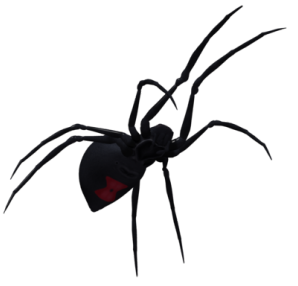Country of Origin: Mexico
Natural Environment and Behavior:
Pterinochilus murinus, commonly known as the Orange Baboon Tarantula (OBT) or “Usambara red,” hails from the semi-arid to arid regions of East Africa, specifically the Usambara Mountains in Tanzania, but also Angola, Burundi, Democratic Republic of the Congo, Kenya, Mozambique, South Africa, Zambia and Zimbabwe.
This tarantula species is adapted to a climate with distinct wet and dry seasons and rocky landscapes.
In its natural behavior, P. murinus is recognized for its burrowing tendencies, creating silk-lined burrows in the ground for shelter and protection. This behavior carries over into captivity, emphasizing the importance of providing an appropriate substrate that allows for burrowing.
Notorious for its defensive and aggressive nature, the OBT readily assumes a threat posture when disturbed. Characterized by speed and agility, caution is advised when handling these tarantulas to prevent stress or injury.
As opportunistic feeders, P. murinus preys on various small invertebrates in the wild and is typically fed live insects, such as crickets or roaches, in captivity. With a primarily terrestrial lifestyle, they spend the majority of their time on the ground but may venture out for food or breeding activities.
The striking orange coloration, particularly on the legs and abdomen, serves as a warning to potential predators. Replicating the natural behaviors of Pterinochilus murinus in captivity involves creating an environment that accommodates burrowing, ensuring a secure enclosure, and approaching handling with caution due to their defensive tendencies. Understanding and respecting the species’ natural behaviors are paramount for their well-being in captivity.
Etymology:
Pterinochilus:
“Pteri” comes from the ancient Greek “ptero” (πτερό) meaning “wing”. “Chilus” is a common ending in spider genus names. Therefore, “Pterinochilus” could be interpreted as “with wings” or “wing of”.
Murinus:
“Murinus” comes from Latin and means “gray” or “grayish”, referring to the gray or grayish coloration of this species of spider, probably referring to the localities which boast brown coloration rather than orange.
Longevity:
Females: 10 to 15 years, males: 3 to 6 years.
Size:
Females up to 16cm and males up to 12cm.
Husbandry:
Semi-arid conditions and 24-28°C for temperature,
A mix of coconut coir, peat moss, and vermiculite is commonly used as substrate and it should be deep enough to accommodate the tarantula’s burrowing instincts.
Enclosure Size:
For spiderlings, use small containers with dimensions around 5-10 cm in length, 5-10 cm in width, and 5-10 cm in height. Ensure there is enough substrate for burrowing and provide a small hide.
Juveniles: As the tarantula grows into a juvenile, a container with dimensions around 15-20 cm in length, 10-15 cm in width, and 10-15 cm in height is appropriate. Include enough substrate for burrowing, a hide, and a water dish.
Adults: Adult Pterinochilus murinus, especially females, require larger enclosures. A tank with dimensions around 30-40 cm in length, 20-30 cm in width, and 20-30 cm in height or larger should provide sufficient space. Ensure there is ample substrate for burrowing, hides, and a water dish.
